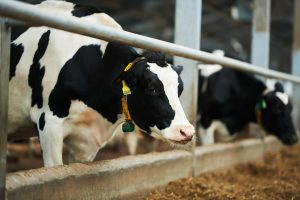Ensuring the safety and quality of dairy and meat products is paramount, as these foods are familiar sources of foodborne illnesses. Traditional methods for detecting bacterial contamination are often time-consuming, costly, and require specialized training. Recent advancements in artificial intelligence (AI) and machine learning (ML) are poised to transform this landscape by offering rapid, accurate, cost-effective solutions for contamination and spoilage detection.
Innovations in Dairy Product Testing
A research team led by Professors Yangchao Luo and Zhenlei Xiao at the University of Connecticut’s College of Agriculture, Health, and Natural Resources has pioneered a novel approach to detect bacterial contamination in milk. Their method employs a 96-well plate with 12 sensors interacting with various bacteria, producing unique patterns. These patterns are analyzed using a machine learning algorithm to identify specific pathogens. This technology can detect five pathogenic bacteria—including Listeria, E. coli, and Salmonella—and three spoilage bacteria in milk samples within two hours, boasting an accuracy rate exceeding 98%.
This advancement addresses significant limitations of existing testing methods, which typically focus on a single type of bacteria and require several days to yield results. The integration of cutting-edge nanotechnology and machine learning enhances sensitivity and streamlines the testing process, making it accessible without the need for extensive laboratory training. The researchers envision developing a user-friendly application that allows consumers to test milk quality at home using a smartphone app capable of reading sensor data.
Advancements in Meat Spoilage Detection
In parallel, the same research team is developing sensors designed to detect volatile organic compounds (VOCs) emitted by bacteria responsible for meat spoilage. These sensors undergo color changes upon exposure to specific VOCs, visually indicating meat freshness. Machine learning models analyze the sensor data to identify patterns corresponding to different spoilage bacteria. A significant advantage of this approach is its non-invasive nature; the sensors can detect VOCs without direct contact with the meat, allowing for integration into packaging materials. This innovation could enable real-time monitoring of meat freshness throughout the supply chain, from production facilities to retail environments.
Complementary Research and Applications
Further research underscores the potential of AI and ML in food spoilage detection. A study published in the International Journal of Engineering Research and Applications explores integrating IoT-enabled systems, biosensors, and nanomaterials to monitor food quality in real-time. The study highlights the use of electronic nose systems, gas sensor arrays, and neural networks to predict spoilage, emphasizing the role of predictive modeling in enhancing food safety and reducing waste.
Another study proposes utilizing gas sensors to measure the levels of gases emitted by raw meat, such as ammonia and hydrogen sulfide, to assess freshness. The system can differentiate between fresh and spoiled meat by employing machine learning algorithms, providing accurate assessments that prevent foodborne illnesses and reduce economic losses due to spoilage.
Implications for Food Safety and Industry Practices
The integration of AI and ML into contamination and spoilage detection systems offers numerous benefits:
- Enhanced Accuracy and Speed: These technologies significantly reduce detection times from days to hours while maintaining high accuracy, enabling prompt responses to contamination issues.
- Cost Reduction: Automated systems decrease the need for specialized labor and extensive laboratory setups, producing cost savings for producers and consumers.
- Improved Food Safety: Early and accurate detection of pathogens and spoilage agents helps prevent the distribution of contaminated products, safeguarding public health.
- Waste Minimization: Real-time monitoring allows for better inventory management, reducing food waste by identifying products nearing spoilage before they reach consumers.
The application of machine learning and artificial intelligence in detecting contamination and spoilage in dairy and meat products marks a significant advancement in food safety protocols. These technologies promise to enhance the efficiency and accuracy of quality control measures, benefiting both producers and consumers. As research progresses, adopting AI-driven solutions is poised to become a standard practice in the food industry, ensuring the delivery of safe, high-quality products to the market.



